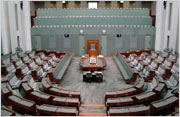Federal Government - Australia To Increase Defence Spending
The government announced a decade-long surge in military spending, a move to counter military expansion in the region, as well as to deal with terrorism, cyber-warfare, and climate change.
The 2016 Defence White Paper says military spending will grow by Au$29.9 Billion over the next 10 years, and will reach two percent of Australia's GDP by 2021. The single largest expenditure will be on a fleet of twelve submarines to replace its the aging Collins Class fleet of six, an initial investment of AU$50 Billion - not including maintenance.
"In the next two decades, half the world's submarines and at least half the world's advanced combat aircraft will be operating in the Indo-Pacific region, in our region, and this complicates the outlook for our security and strategic planning," said Prime Minister Malcolm Turnbull. "We would be concerned if the competition for influence and the growth in military capability were to lead to instability and threaten Australia's interests, whether in the South China Sea, the Korean peninsula or further afield. We have a strong, vital, vested interest in the maintenance of peace, stability and respect for the rule of law."
Big cheques will also be written for additional naval vessels, fighter jets, and personnel.
The white paper identified three strategic defence interests for Australia: Securing Australia's northern borders and communication lines; ensuring security in its immediate region; and maintaining a "rules-based global order", which appears to be a reference to China's recent base-building campaign on islands in the South China Sea that were already claimed by Vietnam and The Philippines.








 Create PDF
Create PDF Print
Print Email to friend
Email to friend